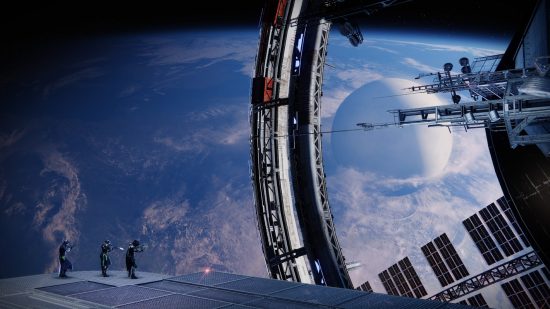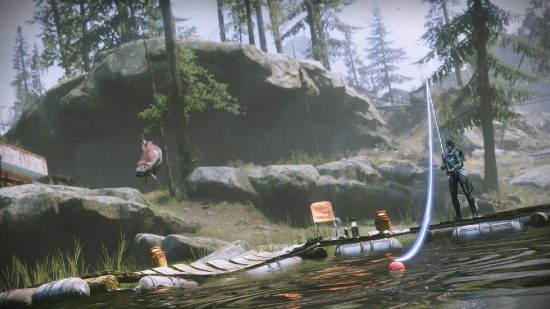Say what you will about Destiny 2’s monetization structure, particularly how it has resulted in the stagnation of PvP related content, but Bungie has long-held the crown for one of the best and most successful live-service games we’ve ever seen with Destiny. Since the launch of Season of the Outlaw alongside Forsaken in September 2018 – the first official season for the game – Bungie has added heaps of new activities, gear, Exotic missions, and perhaps most importantly, new stories to experience that drive the decade-long narrative forward. And, generally, seasons have only been getting better, with more diverse activities and story developments related to the main plot. Love it or hate it, Bungie has all but mastered the craft of seasonal content rollout for a live-service game (perhaps a little too much, depending on who you ask) to make one of the best FPS games on the market. And then, in comes Diablo 4.
Set to be a ‘Destiny killer’ upon release thanks to its highly-polished and incredibly well-written narrative, loot system, and diverse endgame, Diablo 4 has released its first season to little applause. That’s right, Diablo 4 Season of the Malignant – despite having very solid foundations from one of the best RPG games of recent times – has fallen flat for many players, myself included.
Although I have been rather underwhelmed by Destiny 2 Season of the Deep, so much so that Diablo 4’s base game pulled me away for almost a month without the drive to return to one of my favorite games of all time, I now stand in the opposite camp. In that period before Blizzard wheeled out its seasonal content, Diablo 4 looked like it might live up to those predictions of being a live service behemoth that could cause the likes of Destiny 2 some real concern.

Instead, Diablo 4 Season 1 has arrived and has failed to captivate me in the same way the base game did, even as someone who loves level and gear grinding. This has made me realize that, despite how much the Destiny community complains (and rightfully so, in many cases), we have it pretty good if you’re here for PvE. Simply put, Destiny 2’s seasonal structure blows Diablo 4 Season of the Malignant out of the water, and it’s likely to continue to be this way unless major lessons are learned by Blizzard.
One of the major shifts in Bungie’s approach over recent years is realizing that the narrative needs to develop between each expansion. When the seasonal structure began, each season felt like a spin-off story – a filler episode in a TV series. As much as they were enjoyable, it felt like busy work waiting for the ‘real’ story to return. However, since Shadowkeep and particularly since the release of The Witch Queen, seasons have now taken a more focused approach to the narrative. Not only are we getting a chance to zip around the universe meeting new characters and expanding upon previously sidelined ones, but they’re being brought into the fold. For example, Season of the Haunted built upon the relationship between Crow, Caitatl, and Zavala, while also returning to Emperor Calus and the Nightmares which were pertinent to the story of Lightfall in several ways. Likewise, Season of the Deep gave us perhaps the most important single cutscene in Destiny history, revealing the origin of The Witness at long last.

These lessons have been learned slowly over several years and seasons, and the execution isn’t often without faults, but Destiny 2 is regularly advancing its narrative in interesting ways. The same, unfortunately, cannot be said for Diablo 4’s maiden season.
When Blizzard announced Diablo 4 seasons, including Season of the Malignant, it claimed there would be a ‘seasonal storyline’. After the absolutely stellar campaign mode, with great performances, atmosphere, and writing – as well as a huge cliffhanger ending – I was eager to dive back into this haunting world and explore more of the characters. Sadly, while it’s true that there is a seasonal storyline in Season of the Malignant in the technical sense, it’s more or less a tutorial for how to grind in the current season.
It effectively amounts to meeting the new character, Cormond – a former priest of the Cathedral of Light, not that it’s actually an important detail – to then be sent in search of Malignant Monsters and Hearts in a few set locations before the quest just… ends. I was absolutely enthralled by the dialogue and characters in the main story, and while the writing remains strong, there’s little to dig into with Season of the Malignant’s content. There is no narrative journey to embark on, let alone one related to Neyrelle and Lorath, despite Blizzard requiring you to have completed the main story before you can take part in seasons, as they canonically take place afterwards. In fact, it doesn’t even expand upon the character of Cormond significantly like older Destiny seasons would have, even if they weren’t central to the narrative.

In other words, I’m struggling to find a reason to keep grinding in Diablo 4. It reminds more of the Dark Ages of Destiny (no, not in the lore sense), where we’re effectively walking on a treadmill waiting for the next expansion to give us a narrative thread to cling onto. In the future, I hope Blizzard takes notes from Bungie’s tumultuous journey to reach the (mostly) stellar storytelling between seasons. I love logging into Destiny to find out what could happen next, how the characters I’ve grown to love keep going, and all the incredibly intricate lore happenings. After all, without a world or characters to fight for, what else is there? The grind, you say? Well, that’s another matter entirely.
Each season, Destiny 2 adds new gameplay activities, from Psi-Ops Battlegrounds to Deep Dive, and even fishing in Season of the Deep. In fact, we even get the incredible Exotic missions like the one to unlock Wicked Implement and Revision Zero, the latter of which led us through a huge and jaw-dropping environment unlike anything else in gaming.
While the seasonal activities are not all made equally and some often suffer from very valid criticism from players, they do at least give us whole new modes to play, with new stories, dialogue, mechanics, and loot to chase. These significantly change the gameplay loop each season, seeing players dive in and out of different activities to get gear, complete tasks, and progress the seasonal narrative. Some even offer harder difficulties which can make it feel almost like an endgame activity.
Diablo 4 Season of the Malignant, on the other hand, does not add much to the gameplay loop. The main new mechanic is Malignant Monsters and the Malignant Hearts that drop from them which are used to create exciting new builds. While Malignant Hearts are certainly fun additions, neither them nor the Malignant Monsters that spawn them fundamentally change the endgame loop. It’s more an augmentation of the endgame for the season. You’ll still be running endless Nightmare Dungeons and Diablo 4 Helltide events while waiting for the Diablo 4 world bosses to spawn. The gameplay loop and grind remains the same as it was during the base game, there’s just a slightly new power to play with before it gets replaced by a new one in the next season.
This is one of the most overlooked strengths of Destiny 2’s seasonal model. Yes, PvP and Gambit in particular have been left in the dust – and Bungie didn’t do much to prove otherwise following its “dumpster fire” State of the Game update – but the PvE elements have been thriving; we’re not just greeted by a new suite of Artifact upgrades akin to Diablo 4 Season of the Malignant’s Hearts. The core playlists are still integral to the experience, but we have several new activities to play and locations to explore. Even better though, Bungie is clearly eager to try new things, such as the fishing mini-game and the light rogue-like elements of Deep Dive.
Ultimately, the deciding factor is that Destiny 2 seasons require purchase, while Diablo 4 seasons are free besides the battle pass cosmetics. This undeniably results in much higher expectations for Destiny 2 seasons, as well as a greater feeling of being burned when it occasionally doesn’t land, but it’s allowed Bungie to deliver stellar experiences. Since Diablo 4’s seasonal offerings are free, investing as much time and resources into such a feature-complete season as Destiny 2 does is unrealistic. Nevertheless, it’s Diablo 4’s Achilles heel to long-term player retention and success. As Bungie’s approach to Destiny demonstrates, fans are willing to pay for significant content drops on a regular basis.
At the end of the day, no one loves to hate on Destiny more than Destiny fans, and I admit that I’ve been part of that too. The model is not perfect and consistent – some seasons are far stronger or weaker than others, and seasons make up part of a larger discussion about how Destiny 2’s content is monetized. But Bungie has undeniably been leading the charge when it comes to the seasonal model.
With the might of Activision Blizzard, there was – and potentially still is – hope that Diablo 4’s seasons can be a big hit, and not just a stop-gap for the bigger, more ambitious, and more fulfilling yet to come expansions. However, unless the same lessons are learned that have occurred over Destiny 2’s lifetime, then they will always fail to grab me. I’m long past the days of grinding for the sake of grinding. I still enjoy the grind, I’ve just come to appreciate the extras that have elevated Bungie’s live-service looter-shooter to new heights.
Destiny 2 is the prime example of how to succeed in this cutthroat genre, even if Bungie hasn’t always hit the mark and has since dropped the ball with PvP that could have made it one of the best competitive FPS games of all time. The ever-changing toy box of activities and mechanics, and an ever-growing story, world, and cast of characters on a regular basis have gripped me for nearly a decade now, and I’m excited to see what’s in store next with the Destiny 2 The Final Shape release date and beyond.


